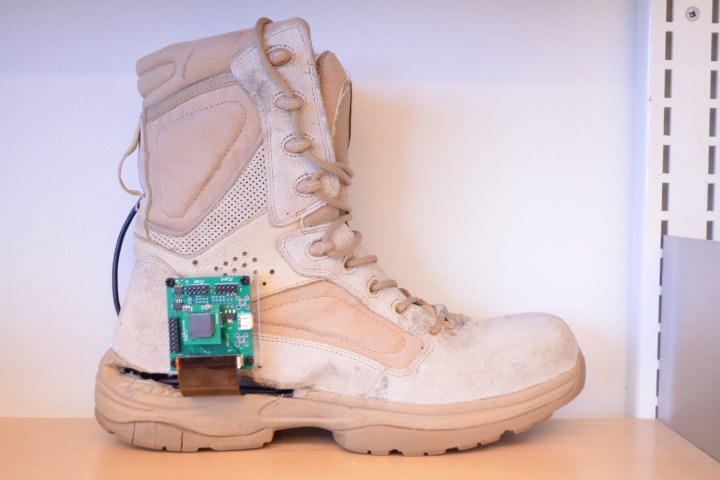Global positioning system, or GPS, tech is able to locate people within 15 to 30 feet of virtually any outdoor location on the planet. Indoors, however, things are less straightforward. That’s because GPS technology works best when the device has a clear line of sight to the sky and, therefore, the GPS satellites used for establishing position. This signal weakens or distorts as it travels through a building. Although more sensitive modern GPS chips can still get a fix inside, this information is often not accurate enough to be useful.
Researchers at the University of Utah may have come up with a solution, though — and it could potentially help save people’s lives. What they have created is an alternate positioning system, accurate within the same distance as GPS, that can be incorporated into a boot or other piece of footwear, but doesn’t rely on satellites to work. The footwear could be worn by firefighters, soldiers, or other individuals who want to be able to keep a closer tab on the location of colleagues. It will also result in more accurate navigation information.
“We [have] developed a flexible ground reaction sensor array and inserted the sensor array under the insole of a shoe,” Darrin Young, an electrical engineer at the University of Utah, told Digital Trends. “When a pedestrian wears such a shoe, the sensor array can accurately detect when the pedestrian’s foot strikes the ground, rolls over the ground, and detaches from the ground when he or she is walking. This foot-on-ground timing information will be used to reset an inertial measurement unit (IMU), which is embedded under the heel region of the shoe. The accurate resetting of the IMU at each step can greatly improve the navigation accuracy. The foot-on-ground timing serves as a critical reference for calibrating the IMU to achieve high-performance navigation.”
An IMU is a black box containing multiple sensors, including a gyroscope, magnetometer, and accelerometer. Combining information from multiple IMUs makes it possible to achieve a superior navigation performance to that which is possible by employing only a single IMU. The result is a performance comparable with GPS, but without the limitations. That means that it can be used indoors since, unlike GPS, it’s not reliant on satellites to work out a wearer’s exact location.
“As for the next step, we are improving the robustness of our prototype design, incorporating short-distance wireless data communication capability, enhancing software, and reducing the overall system cost,” Young said. “We will be engaging commercialization effort on this technology.”
The team’s work on the GPS-free navigation system was presented this week at the 2018 International Solid-State Circuits Conference in San Francisco.



